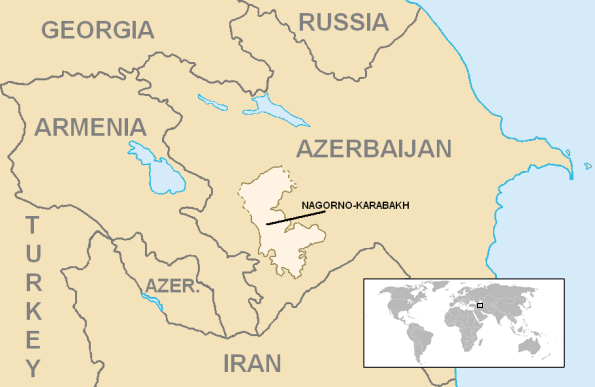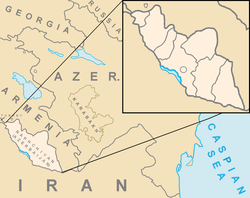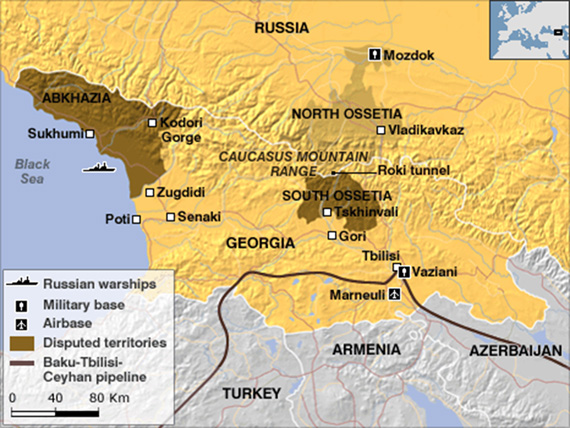
The most tense border crossing I've ever made was with Giulia -
returning from Mexico to the US through Nuevo Laredo in March last year.
Although the leadup was uneventful, the tension increased steadily the nearer
we got to the border, finally reaching fever pitch as our 1976 Chevrolet
Sportsvan was inspected by the US customs station. Aside from the usual fear of
authority drilled into anyone who went to a Christian Brothers school, at the
core of the anxiety was the question what the hell happens once you have left
Mexico but then get denied access to the US? We were essentially in
no-man's-land having already given up our vehicle permit and visas before
crossing the bridge that towers over the dribbling Rio Grande. My assumption
was that the only available option would be to reapply for both, perhaps
dealing the deathblow to our already wretched finances and somehow head back
the way we came. I was curious but I didn't want to ask the custom's guard,
bloated not just with tex-mex cuisine but his own sense of self-importance
questions which would most likely be responded to by "why do you want to
know what happens if you don't get let in?"
I got a jolt of cold lightning up my spine when they asked me for a
document that I did not have. This was followed by soft relief when I was told
that I could buy another one. While I filled out the necessary forms the latex
gloved customs guards went through our van. I spied out of the corner of my eye
a sign which had "You MUST declare" then a list of things which included
mangoes. We had mangoes in the back which I hurriedly declared to one guard. He
came right up to me and said "You're lucky you did that - we could have
sent you back". Eventually, without smile or character, they told us we
could go having left our van a violated mess (unlike the Mexican guards that
always left everything immaculately). I drove off into the Texas afternoon
completely relieved. Incidentally, my plan, if I got turned back from the US
was drive 1100km back to Mexico City - sell the van and fly back to Australia
from there. I would have missed out on my existing flight and a meeting with
someone that had already agreed to buy the van.
Border crossing are almost always tense but you can usually consider
them in isolation, on a case-by-case basis. By contrast the South Caucasus is a
complex web of ethnic tensions, closed borders and Soviet style bureaucracy. This
means that a comprehensive tour of the region must be planned in advance and
take into account each restriction which could impair your movement,
understanding that entry here might cause problems there. It is also important
to take into consideration the mode of transport you intend to take – some states
will place further restrictions or import taxes on you if you want to bring
your own car or motorcycle.
Understand that this region is still in a state of flux - with the
most recent major changes to the map happening as recently as August 2008 with
the borders of South Ossetia and Abkhazia being redrawn as a consequence of
Georgian-Ossetian conflict. The main reason why the South Caucasus has not
organically reached a level of stability is that the freeze imposed on the
region when it was part of the USSR, has now gone. The tensions that predated the
Bolshevik revolution have reignited and begun to smoulder again, occasionally
combusting. As a result it is always necessary to seek the latest information
before you travel there – any one of the countries or autonomous states described
below has the potential to change at any time for a reason as seemingly insignificant
as if one country is hosting the Eurovision finals.
FENCE 1 – Azerbaijani-Armenian border is closed
Nagorno-Karabakh - the name alone is a cultural hodgepodge (Nagorno
is Russian for "highland" while Karabakh is Persian for "black
garden). The image (right) of flaming hole in the heart of Azerbaijan has been
taken from the Azeri Ministry of Foreign Affairs website. This flaming hole
(the flames are animated on the website) represents Nagorno-Karabakh which is
an enclave, with an ethnic Armenian majority, entirely surrounded by
Azerbaijan. Conflict in Nagorno-Karabakh has its roots in 1921 when, after centuries
of Armenians and Azeri's living side by side, the early Bolsheviks established it
as an autonomous Armenian state within Azeri territory. This was a move by the
Bolsheviks who attempted to maintain control by exploiting regional tensions.
It is said that Nagorno-Karabakh caused the end of the USSR - being the first
to reclaim power to its local Soviet from the Supreme Soviet in Moscow, it was
the thread that unravelled the whole red sweater breaking a Soviet taboo
thereby undermining the legitimacy of the entire regime. Without Soviet control
Azerbaijan attempted to claim Nagorno-Karabakh as its own. Armenia responded
with the idea of protecting the Armenian ethnic majority there. This resulted
in a series of escalating conflicts began and lasted from 1988-1994 with heavy
civilian casualties on each side. A ceasefire declared in 1994 was by no means
an end to the violence with sporadic skirmishes still erupting on both sides,
the latest of which was in March 8 2011.
Domestic opinion in Azerbaijan and Armenia of the Nagorno-Karabakh
issue is uncompromising toward the other - both see this as a sacred issue over
which they are not willing to budge. The animated image on Foreign Affairs
website perfectly describes how sensitive the Nagorno Karabakh issue is in
Azerbaijan. Although Nagorno Karabakh is autonomous it seems to move in step with
Armenia with the Karabakh party holding a great deal of sway in the capital. The
situation has not improved because there is no dialogue between the two states which
is a function of the less than pluralistic regimes in these countries (in 2000
peace plans were conducted by the respective leaders without opening up the
issue for debate within their societies). Thus if we view the closed borders as
closed not just physically but also in terms of flow of opinion between the
Azerbaijan and Armenia we get an understanding why so little of the explosive
potential of the issue has dissipated since 1994.
The Nagorno-Karabakh issue impacts on travellers in two ways: the
first and most obvious is that the border between Azerbaijan and Armenia is
closed. The second is only relevant if you wish to travel to Nagorno-Karabakh
itself. At the time of writing the Australian Department of Foreign Affairs
site Smart Traveller has the region under a “Do not travel” status. I have
heard that the enclave is most likely safe provided you stay away from the
Azerbaijan border but do not take this as gospel. Nagorno-Karabakh is
accessible from Armenia via the Lachin corridor, a mountain pass legally in
Azeri territory but effectively under Armenian control. A visa is available in
Yerevan the Armenian capital. Note that any evidence of this in your passport
means you would be refused entry into Azerbaijan. I've heard that even having
an Armenian sounding name can cause problems when crossing into Azerbaijan. Ask
for the visa to Nagorno-Karabakh on a separate piece of paper which can be
discarded before entering Azerbaijan.
Also relevant to this border being closed is Nakhchivan the Azerbaijani landlocked autonomous enclave which shares a border with Armenia on the western side. Nakhchivan is geographically isolated from the rest of Azerbaijan, and the Caucasus because it's only borders are with Armenia which is closed, Turkey and Iran. This means that the state can only be accessed via either Turkey and Iran.
FENCE 2 – The Georgian-Russian borders are Closed
The two states, grouped into a single conflict could not really be more different from one another. First is South Ossetia a mountainous grassland which pokes below the Caucasus mountain range. It's population is poor, mostly Ossetians with a minority of Georgians. South Ossetia separation from Georgia is a legacy from the Soviet Union, when the Ossetians sided with the invading Russian Bolsheviks against the Georgian Mensheviks. The second state is Abkhazia which contains the subtropical sea resorts favoured by Soviet Party leaders, including Stalin, and the Ottoman Turks before them. Because of this appeal Abkhazia has a history of being a cosmopolitan destination home to Greeks, Jews and Armenians as well as it's native Abkhaz population which is slowly regaining a majority after being deported en masse during the Soviet era as enemies of the Soviet Union.
Observe the way that both these states dip below the natural border of the Caucasus mountain range, the highest mountain range in Europe. It is clear that they are implied targets in the "restoration of Geogria's territorial integrity" which Georgia's president, Mikheil Saakashvili, promised to fulfil in his first term. Russia saw Georgia's new Western orientation as a threat, to which it responded by offering protection to South Ossetia and Abkhazia against Georgia. The resulting South-Ossetian war was depicted in the West as the result of Russian aggression but Georgian nationalism and the belief in Georgia that the west would lend more support than it did lead to the impasse.
One of the most bizzare moments that demonstrates how divisive an issue South Ossetia is is in the lead up to war, Saakashvili invited 70s band Boney M (Ra Ra Rasputin) to the Georgian inhabited town in the heart of South Ossetia. There were claims by Boney M that the band that played there that day were actually imposters.
Georgia lost badly in the 2008 war, losing territory as well as having most ethnic Georgian's expelled from Abkhazia and South Ossetia. The borders from Georgia to Russia as well as these two states are now closed, so they are only accessible from Russia. These borders are patrolled by Russian peacekeepers - one of which said in one interview they were waiting to tear off their peacekeeping armbands and go back to war. Furthermore both Abkhazia and South Ossetia, just as with Nagorno-Karabakh, are not recognised as real states by the rest of the world so are forced to rely increasingly on Russia.
In terms of travel plans, without a very large detour through a third country (Azerbaijan-Russian border is closed to most passports) it is a matter of either visiting these two states and Russia or visiting the rest of the Caucasus. Even travelling by boat to/from Abkhazia is not an option as Georgia has a naval blockade of Abkhazia. The best option is if you are travelling into the Caucasus, black out the areas on your map and, travel wise, just pretend they don't exist.
FENCE 3 – The Armenian-Turkish border is closed
With Armenia on the fringes of Christian world it was always going to be exposed when the radically pro-Turkic Young Turks came to power in 1908. Sandwiched between the Ottoman Empire and the Russia Empire, Amenia allied itself with Russia when Turkey lauched an attack on the Caucasus. Turkey suffered one of the largest defeats in military history and responded with the forced deportation of nearly a million Armenians from Anatolia in Turkey. Most died en route to deserts in Syria or Iraq. This is known as the Armenian Genocide.
The current rift between Armenia and Turkey is not due to the event itself but is largely because of Turkey's failure to recognize it as an act of genocide, terming it instead as a consequence of war. A good deal of the evidence points to event as a deliberate attempt to clear East Anatolia of it's Armenian inhabitants. Although there is still a strain of ultranationlism in Turkey that continues to deny the act was genocide this fence is the most likely to come down soon with the Armenian president attending a football game between Turkey and Armenia, congratulating the Turkish president when Turkey scored.
This border being closed does not have a massive impact on a trip through the Caucasus on it's own but when combined with the fact that Armenia also has closed borders with Azerbaijan and Iran requiring a visa to enter, it does potentially make Armenia a little bit of a cul-de-sac. Travel to Turkey is easily achieved using Georgia as a transit country.
FENCE 4 - Limit of 72 hours on a Motorbike in Azerbaijan

While more of a conceptual barrier that a geopolitical fence - this little Azerbaijani policy has the potential throw your entire trip in to disarray. I have had trouble finding where the policy is directly referred to in official government documents but it has been mentioned on numerous forums by people that have experienced it first hand. As far as I can surmise the policy is that it is possible to bring in a car or motorbike for a maximum of 72 hours (to the minute) on a temporary importation document. The consequences of overstaying this is a massive fine for each day spent in excess of this time.
This issue has caused more agony than any others during planning, and might make you try to resort to taking public transport. Considering that at its narrowest point from Georgia to Baku the distance is 333km this might not be a massive problem until you consider exactly where Azerbaijan is situated - which is on the edge of the Caspian, with its border to Russia closed to all but CIS passport holders. As mentioned previously the border with Armenia is closed and besides when travelling to Baku and back you would have to cross the country twice.
The first solution is to leave your vehicle at the custom's office in Baku - this gives you another 5 days to travel through Azerbaijan on public transport. From there you will have to catch a ferry to Turkmenistan which is where the problems begin to arise. Turkmenistan is described as the grittiest of the 'stans and taking a vehicle there a bureaucratic nightmare. Although petrol is 2 cents a liter you must have a guide with you (at $130/day), unless you're on a transit visa, at all times when travelling outside the capital Ashgabat. The logical answer to this might appear to be to get a transit visa - the issue here is that Turkmenistan seems to close its borders with neighbouring countries on a whim - leaving you high and dry with no time left on your five day transit visa to traverse it's desert interior to a viable crossing.
The second solution is to travel through Azerbaijan to Iran. As previously mentioned getting an Iranian visa can be difficult, especially if you're a journalist or from the USA, and perhaps at the time of writing from the UK. A letter of invitation could help and I've been informed that there is a 75% chance of getting in on a Commonwealth visa - but this was before the UK expelled all Iranian diplomats from the Iranian embassy in London. Another issue is that you will not be informed if your application has been rejected, only if it has been approved, so you could be waiting for a call that will never come. It does make the Iranian visa a little bit of a tent pole for the entire South-East Caucasian expedition if you intend to travel by car or motorcycle.
Conclusion
There are only a few possible sequences if you want to visit all the nations in the Southern Caucasus. Hinging on getting an Iranian visa I plan on travelling in the sequence of Georgia -> Azerbaijan -> Iran -> Armenia -> Nagorno-Karabakh -> Georgia -> Turkey.





Is there a consulate where you can find out about this law? In olden times ( communist Eastern Europe ) having a spare bottle of Johnny Walker can help. No not for you, for the guards.
ReplyDelete